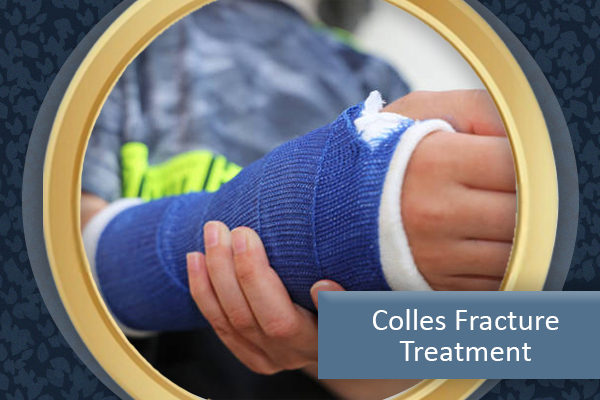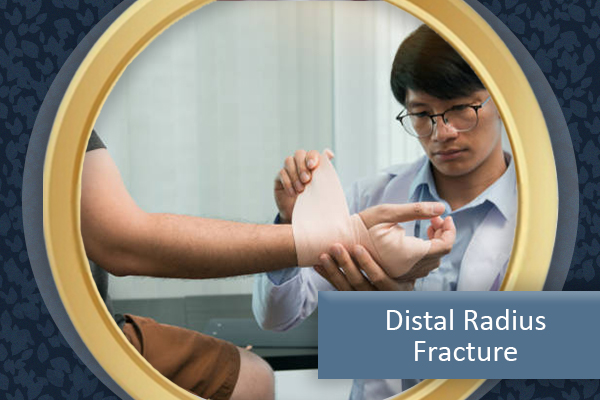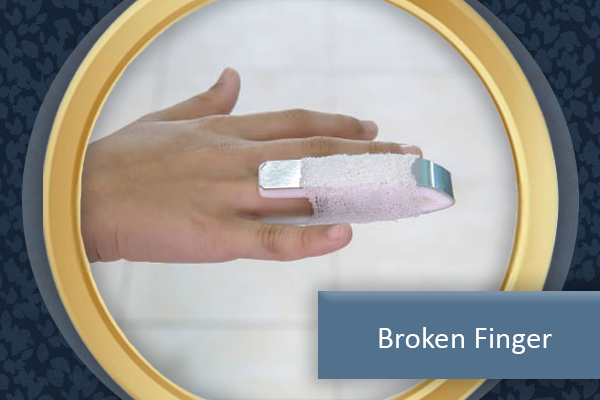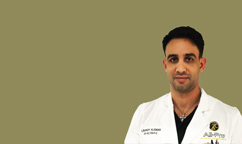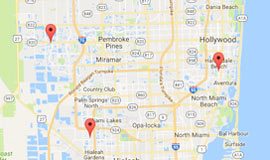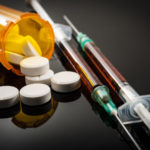Unhappy Triad: Torn ACL, MCL and Meniscus
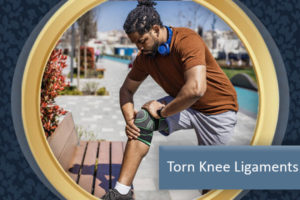 An injury to a ligament in the knee often entails damage to other structures as well because of the complex construction of the joint. Surgeons refer to the so-called Unhappy Triad of torn ACL, MCL and meniscus— a triple-pronged injury that is often seen in knee patients.
An injury to a ligament in the knee often entails damage to other structures as well because of the complex construction of the joint. Surgeons refer to the so-called Unhappy Triad of torn ACL, MCL and meniscus— a triple-pronged injury that is often seen in knee patients.
Multiple ligament tears are best treated as soon as possible after the injury, before scar tissue can form.
The following ligaments enable the knee to support the body’s weight and remain flexible:
- the Posterior Cruciate Ligament (PCL) and Anterior Cruciate Ligament (ACL) control back-and-forth movement;
- the Medial Collateral Ligament (MLC) helps to brace the inside of the knee;
- the Lateral Collateral Ligament (LCL) braces the ouside of the knee, controlling sideways motion and protecting the knee from over-extending.
While most injuries to the knee ligaments are sprains or ruptures, sudden impact can result in a partial or complete tear. A torn ACL, the most common knee injury, occurs frequently in athletes. The doctor may conduct a physical exam and order imaging tests to determine the exact nature of the injury. If the injury is not severe, he may prescribe conservative treatments such as pain relievers, ice, compression and/or resting the affected knee. If the damage is severe, surgery may be advised.
Give Knee Ligament Injuries Time to Heal
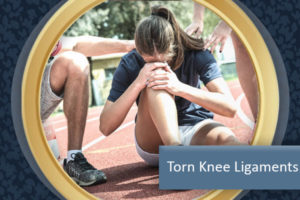 Patients who have suffered a torn ligament are often eager to return to their favorite sport or activity. Because the knee is a critical joint for nearly every vigorous activity, it is important to allow sufficient time for recovery.
Patients who have suffered a torn ligament are often eager to return to their favorite sport or activity. Because the knee is a critical joint for nearly every vigorous activity, it is important to allow sufficient time for recovery.
The length of the healing period depends on the type of injury and the treatment but generally, surgery for a torn ACL should be followed by up to six months of recovery time.
Torn Knee Ligament Recovery and Rehabilitation
Recovery after knee construction starts with one to three weeks to allow the swelling to subside. During this time, the knee should be elevated and treated with ice. Doctor may also prescribe exercises on a stationary bicycle.
During the following two to six weeks, exercises to improve range of motion and strength are added to the patient’s regimen.
From about six weeks to four months, the patient may be allowed to resume jogging. After six months, he or she can return to their sport or activity.
Ligament repair and replacement for damaged knees have been among orthopedics’ great success stories, with elite athletes returning to successful careers after injuries that ended many a career just a few years ago.
For more information about torn ligaments or knee reconstruction, call our Miami Orthopedics and Sports Medicine Clinic for an appointment.
Common Questions about Torn Knee Ligaments
Am I at risk of torn knee ligaments?
Many types of injuries can occur to the knee—especially in athletes. Despite being the largest joint in the body, the knee can be fractured, sprained, torn, dislocated, and more if athletes do not use the proper form and technique or wear the right equipment.
Before making a treatment plan, knowing what knee injuries you are at risk for in your sport of choice is important. Our Florida orthopedic specialists will diagnose the specific injury and design a treatment plan accordingly.
What are the most commonly injured knee ligaments?
An injury to a ligament in the knee often entails damage to other structures as well because of the complex construction of the joint.
A triple-pronged injury known as the Unhappy Triad of torn ACL, MCL, and meniscus occurs in knee patients. Multiple ligament tears should be treated as soon as possible after the injury, before scar tissue forms.
How will an orthopedic specialist treat torn knee ligaments?
Fortunately, our orthopedical specialists in our Florida locations can diagnose and treat different torn ligament injuries. Usually, knee ligament injuries are caused by sprains or ruptures, but sudden impacts can cause partial or complete tears. The most common knee injury, especially in athletes, is a torn ACL.
Our doctors will carry out diagnostic procedures, physical exams, and imaging tests to determine the exact nature of the injury. Once the cause of the pain is identified, our doctors can design a treatment plan. Depending on the severity of the damage, he may prescribe conservative treatments, which include pain relievers, ice, compression, and/or resting the knee. Severe damage may require surgery.
What is the treatment for rotator cuff injury?
Conservative treatment (rest, exercise, pain medication) is usually sufficient for patients to recover. Patients with symptoms that persist for more than six months, who have a significant tear in the rotator cuff, or who have sustained a major, acute injury (such as sports- or accident-related injury) are recommended for surgery.
How long is the recovery time from torn knee ligaments?
Since the knee is a critical joint for almost every vigorous activity, allowing enough time for recovery is crucial. Generally, surgery for a torn ACL should be followed by a six-month recovery period, depending on the type of injury and the treatment.
A knee reconstruction recovery period of one to three weeks is required for swelling to subside. It is essential to wait until the knee is no longer swollen to exercise or walk extensively because it is not entirely stable at that point. You should elevate the knee and apply ice during this time. Your doctor may also instruct you to exercise on a stationary bike by your doctor.




